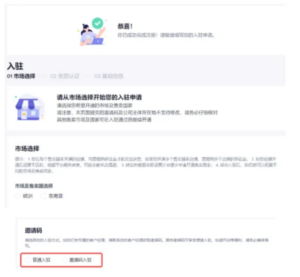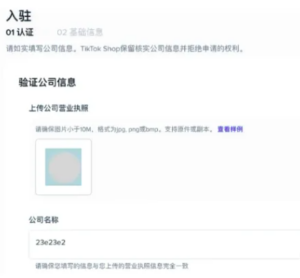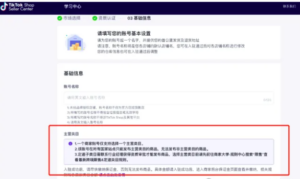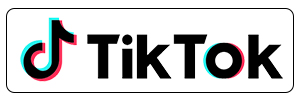1、 Prepare materials
Before starting the onboarding process, you need to prepare the following necessary materials:
Business license: The business activities that need to cover the categories of goods sold by the merchant can be limited company, sole proprietorship, or individual business license.
Corporate documents: such as ID card or passport.
Unique mobile phone number and email address across the entire network: used for registration and receiving verification codes.
Third party platform management experience (if any): Store information on mainstream third-party platforms, with a comprehensive store rating of ≥ 4.3 points or a positive review rate of ≥ 90%.
Product information: Ensure that the product meets local export requirements and platform governance requirements.
Logistics information: Contact persons and mobile phone numbers for shipping and return warehouses.
Registration Application
Visit the TikTok Shop official website: Use Google Chrome (recommended to use the US network environment, if applying for a US store) or directly enter the TikTok app to find the TikTok Shop registration page.
Register an account: Enter your phone number, email address, and obtain a verification code to complete the registration.
Market selection: Based on your business needs and target market, choose the corresponding market to enter, such as Southeast Asia, Europe (especially the UK), etc.
Fill in the entry information
Market selection: If you choose the Southeast Asian market, you may need an invitation code to increase the success rate of entry.

Qualification certification
Upload qualification documents such as business license and legal representative information.

If applying for a small store in the United States, you need to provide your US passport or driver’s license+SSN (Social Security Number), or ITIN (Tax ID) as an alternative.
Basic store information: Fill in the store name (note that once the account name is determined, it cannot be modified and needs to be filled in carefully), main category, operating address, etc.

Submit for review
Submit application: After filling in all the necessary information, submit the application for entry.
Waiting for review: TikTok official will review your application, and the review period is generally within 3 working days.
Review result: The review result will be notified to you via email. If rejected, revise according to the reason for rejection and resubmit for review.
Preparing to open a store
Set up store: After approval, enter the TikTok Shop backend to set up the store, including adding products, setting payment methods, and improving logistics information.
Product upload: Upload product photos, descriptions, prices, and other information to ensure the accuracy of product information.
Marketing strategy: Develop a marketing plan, publish promotional videos and live streams through TikTok accounts to attract more fans and potential buyers.
operation management
Order management: Timely process orders to ensure timely delivery of goods.
Customer Service: Provide excellent customer service, answer buyer questions, handle returns and exchanges, and other matters.
Data analysis: Regularly analyze store data to understand sales situation, optimize products and marketing strategies.
2、 TikTok Cross border E-commerce Fee Details
1. Entry fee
TikTok stores adopt an invitation or self application system for entry, and the basic entry fee is relatively low. For example, the basic entry fee for small stores in the United States is 1000 yuan, but the specific fee may vary by region.
2. Margin
The amount of deposit varies depending on the category of the store. For example, in the UK, the margin range ranges from £ 400 to £ 4000; In regions such as the United States, Singapore, and Malaysia, the margin ranges from $125 to $4500. Local small shops currently do not need to pay a deposit.
3. Commission fees
The TikTok platform will commission a certain percentage of sales orders from stores, depending on the product category and order amount. In addition, withdrawals will also incur a certain percentage of commission fees. For example, when using PayPal to withdraw funds, a 2% withdrawal fee is required for each transaction; To withdraw using TikTok’s own wallet, a 2% handling fee and 10% of the sales amount are required for each transaction.
4. Operating costs
Operating costs include personnel costs, source of goods costs, logistics costs, and marketing costs. Operating a TikTok store requires a professional management and operation team, and the salaries, training expenses, and benefits of team members constitute personnel costs. The cost of sourcing depends on factors such as product type, quantity, purchase price, and transportation costs. Logistics costs vary depending on factors such as order quantity, delivery location, and return processing. In order to increase the visibility and sales of the store, it is also necessary to invest in certain marketing costs, such as advertising placement, promotional activities, content creation, etc.








